THE CLASSIC HORROR FILM
By Jeffrey-Baptiste Tarlofsky
By Jeffrey-Baptiste Tarlofsky
Lesson 16 consists of 10 video lectures and transcripts of those lectures, and 8 film excerpts. Start with the lecture, Part 1, and continue down the page in sequence until you reach the end of the lesson.
レッスン16は10本のビデオレクチャー(レクチャーのテキストがビデオレクチャーの下に記載されています)と8本の動画で構成されています。
このレッスンは、ページをスクロールダウンしながら最初から順番に動画を見たりテキストを読んでください。
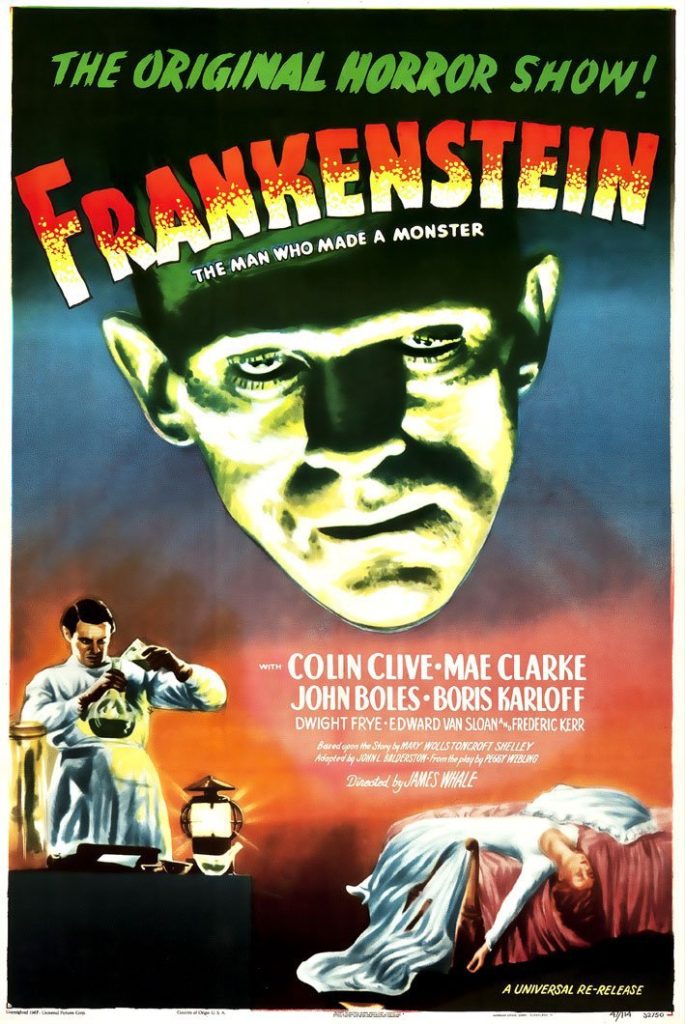
Directed by James Whale
Produced by Carl Laemmle Jr.
Written by Francis Edward Faragoh, Garret Fort based on the play by Peggy Webling and the novel by Mary Shelley
Starring Boris Karloff, Colin Clive, Edward Van Sloane and Dwight Frye
Budget: $265,000
Running Time: 71 minutes
Part One
All the way back in our first lesson we talked about how horror is associated not with just fear, but with shock, surprise, repulsion, and disgust. I am sure you also remember me using Nosferatu and Phantom of the Opera to demonstrate to you the audience’s desire both to see and not see the monsters. The films are also perfect examples of what we call “the reveal” …the moment when we first see the monster. When the young real estate agent in Nosferatu first sees the vampire outside his bedroom he reacts with shock, revulsion, and horror. He wants to run away, but he can only hide under the bedsheets. His reaction is one of complete horror because his host has suddenly grown long claws and pointed ears and hideous rat-like fangs. Yet, we had already seen Count Orlock and we were already disturbed by his strange looks earlier in the film. His vampire appearance is not so very different, just more extreme.
But, on the other hand, Erik has remained masked for the entire first part of The Phantom of the Opera. We know he is the Phantom, but we have not seen anything of his face.
Then Christine disobeys him and tears off his mask to reveal the hidden, forbidden face of the monster.
As we know, Lon Chaney spent weeks working on the Phantom make-up to create a face that so shocked audiences in the movie theater that people were said to have run from the theater screaming when the face was at last “revealed”. Lon Chaney used to sit quietly in the back of movie theaters watching Phantom up to the point of “the reveal” just to enjoy the audience’s screams. Then he would leave feeling quite happy with himself.
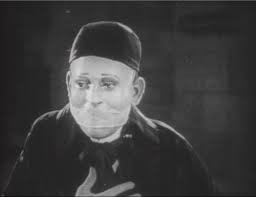
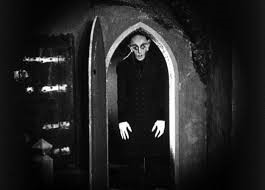

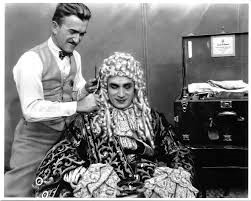
Nobody had yet matched the “reveal” in Phantom of the Opera…until Frankenstein.
James Whale knew exactly what he was doing when he directed the “reveal” of his monster. But before he could direct the reveal, he needed to have something to reveal. James Whale turned to the makeup artist at Universal, Jack Pierce, to create the monster’s makeup.
Pierce, you will recall, created Gwynplaine’s deformed grin in The Man Who Laughed in 1928.

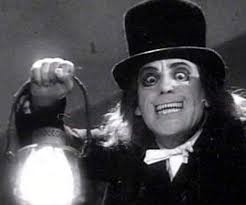


This was controversial because that make-up looked so much like Lon Chaney’s makeup for the Grinning Vampire in London After Midnight? Did Pierce steal Chaney’s idea, did Chaney steal Pierce’s? We will probably never know.
While Chaney was the acknowledged father of horror film make-up, after his death Pierce would become responsible for some of Hollywood’s most famous monster makeups. He was assigned to do the makeup for Bela Lugosi in Dracula, but Lugosi, a veteran of the stage, insisted on doing his own makeup. Pierce’s big break came when he was called in to create the Frankenstein monster. It is still considered one of the greatest makeups ever made. Universal immediately copyrighted the makeup after the release of the film.
As I said in the previous lesson, Pierce’s first attempt at a makeup for the monster was tested by Bela Lugosi who hated it. But that was in an early stage of the makeup’s development. Then, James Whale saw Boris Karloff’s face without his false teeth in and brought him to Pierce for a test. It is not so much that Karloff’s face was uniquely suited for the monster makeup Pierce created, but that Karloff’s face was like the raw marble a sculpture works with. Sculptures say that the statue “lies within the marble” waiting to be revealed. Karloff’s face seemed to offer Pierce similar inspiration.
The process of applying the makeup was long and tedious. It took Pierce four hours to do the make-up for the monster during which Karloff had to sit perfectly still in the make-up chair. Pierce and Karloff would start at 5:00 in the morning, long before anyone else was on the set, so Karloff would be ready to start work at 9:00. Then Karloff would put in a full day of acting sometimes as much as twelve hours a day. In addition to the makeup Karloff was also fitted with very heavy boots with 10-centimeter soles and heels to make him taller. But even with all this, it is still Whale’s direction that really makes the monster “reveal” in Frankenstein so effective. Watch it again now
However, Whale builds up anticipation by first having us hear the monster’s approaching footsteps. I once gave a whole lecture to a class in which I just played scenes in which we hear footsteps. It is amazing what footsteps can tell us: is someone running or walking, sneaking up on someone or trying to hide, are they a man or woman’s footsteps? Human or animal…or monster? In Frankenstein the footsteps we hear tell us that something slow and heavy and clumsy is approaching.
As I said, the reveal of Erik’s face is brightly lit so we can enjoy a really good look at his deformity, but Whale places the monster in deep shadow only to use that as a contrast to the deathly paleness of his face. It’s very expressionistic. He also has the monster enter with his back to us in order to draw out the anticipation for just a little longer. The monster slowly turns first into profile…and then gives us a full view of his face. Everything so far is very slow…and then suddenly it is One, TWO, THREE!!! — a standard shot, a close-up, and then the super close-up.
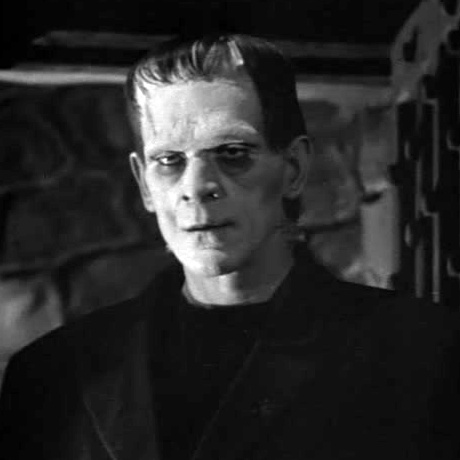
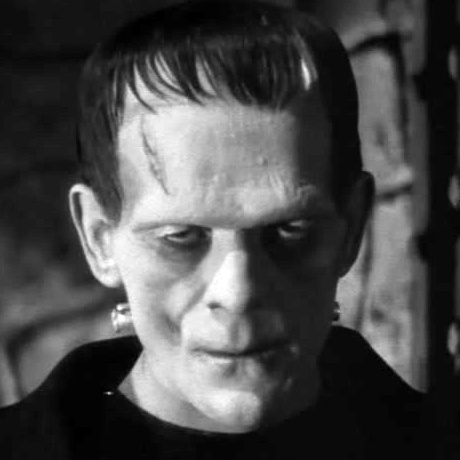
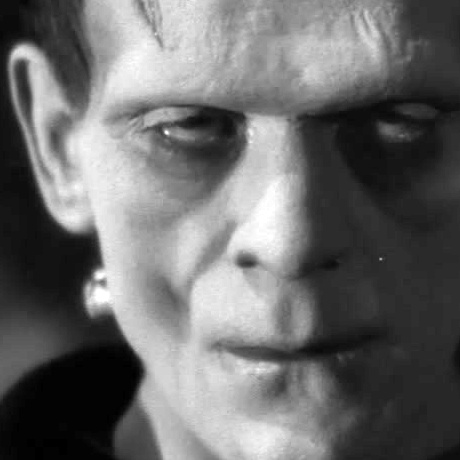
According to news reports at the time, people in the audiences leaned back on one, were out of their seats on two, and were running down the aisles screaming on three. James Whale gave the audience a “reveal” that was as great as the one of Erik in Phantom of The Opera. That is quite an achievement, of course. But then, in the very same scene, Boris Karloff gives us one of the greatest performances any actor will ever give in a horror film…or maybe any film. What is so striking about it is that his performance is entirely silent. The year is 1931 and silent movies had died more than three years before. The Man Who Laughs, was one of the very last films in which an actor, Conrad Veidt, had to communicate to his audience entirely through mime. But here is Boris Karloff under James Whale’s direction giving one of the greatest mime performances in film history…in the age of sound.
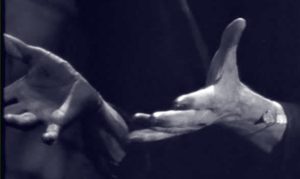 Part Three
Part Three
It is more than just a great mime performance, though. In your homework, you read the story (probably apocryphal) of Lon Chaney picking up a hitchhiking Boris Karloff and advising him to find something “only he could do”. Well, Karloff didn’t take Chaney’s advice because of what Karloff is doing in this scene …especially in that remarkable close-up of his hands is something only Lon Chaney could do…at least until Karloff came along and imitated him. That is what I believe he is doing in this scene. I truly believe that Boris Karloff is asking himself the question: “how would Lon Chaney have played this?” and then he gives a performance which is, frankly speaking, as good as any Chaney ever gave.
Again, just imagine how different the movie would have been if Bela Lugosi had played the monster instead of Boris Karloff. Carl Laemmle Jr. originally wanted Lon Chaney to play Dracula, but because he died the part went to Lugosi who gave the best performance of his life as Dracula and became one of the icons of horror in the process. But Lugosi’s performance was wholly his own, created after playing Dracula hundreds of times on stage. It was nothing like anything Lon Chaney had ever done. Because he was such a good Dracula, Carl Laemmle Jr. wanted Lugosi to be the monster in Frankenstein, but Lugosi turned the role down largely because the monster does not speak in the film (and Lugosi hated the early version of the make-up). However, Lon Chaney never spoke in any of his horror films, either! Boris Karloff embraced both the difficult makeup and the monster’s inability to speak and turned both to his advantage. Without speaking a single word in the entire film, Boris Karloff, from the moment he is on the screen, becomes the real star of the movie instead of Colin Clive’s Henry Frankenstein.
Of course, James Whale and John Balderston made it easy for Karloff to steal the movie because they made the monster so interesting, so complex. Just consider again the question, “Why did they shut out the light?” It was what I asked you to think about for your homework. Now that you have watched the scene again I am sure you noticed that the monster also asks that question…with his gestures. If you have not yet thought about the answer, think about it now as you watch the next excerpt.
Part Four
As to why they shut out the light, I do not have an answer myself. I have never yet been able to completely understand why they shut out the light. What is easier to understand is what happens once they shut out the light. Frankenstein tells the monster to “go and sit down”. As we have said before, Frankenstein is always telling other people to sit down so they will be in a subordinate position to him. It is like his control of when and how to bring the monster into the light. Yet, Frankenstein is pleased that the monster understands his commands, or perhaps pleased that he both understands and obeys them. he says, “It’s wonderful!” But, the monster still wants the light and he gestures in that almost infantile way to communicate what he wants. Surely, any of us can understand the monster’s desire to reach towards the light and away from the darkness. It is basic human instinct. Why would Frankenstein and Dr. Waldman suddenly deny the monster something any human being would want? Is it because they do not think of him as human…or is it that the very humanity of the monster disturbs them? I don’t know.
It is at this moment that we reach a turning point in the film. Fritz comes into the room with his torch and this time the monster reacts like an animal with an instinctual fear of fire. Rather than trying to quiet the monster by removing the torch and talking to him (and remember the monster has shown he understands language), they immediately try to subdue and restrain him, like an animal. They knock him out and drag him to the basement…away from the light.
Part Five – Frankenstein is losing control, not only of his creation but of himself as well. He is at a loss. He does not know what to do. Dr. Waldman tells him to destroy the monster “as you would any savage beast”. Dr. Waldman sees no humanity in the monster at all, (or he refuses to see it). But Frankenstein replies that killing the monster “would be murder”. Murder, of course, refers to the willful killing of a human being, not an animal. Human or animal? Frankenstein is not at all sure what he has created. In fact, he does not even seem to know how to talk about his creation. When the monster first moves after being brought to life, Frankenstein shouts “It’s alive”…It. Later he says “He’s only a few days old…wait until I bring him into the light”. Which is it to be, an “it” or a “he”? After the monster is taken to the dungeon-like cellar, Frankenstein says, “Oh, come away and leave it alone”. Sometimes, when the monster pleases him or obeys him, Frankenstein uses “he” and sometimes when the monster displeases him or disobeys him he uses “it”. But not even this is consistent. Finally, remember that when God created man he gave him the name “Adam”, but Frankenstein never even gives his creation a name, (many people mistakenly think that the monster is named “Frankenstein”, but that is the name of the man who created him, the monster remains nameless).
The monster wants light, but he fears fire. This is the dual or double nature of the monster, (he wants light, but it fears fire). It is only when fire is tamed, as Dr. Frankenstein tames it in his machinery, that fire becomes a tool for man’s purposes. Fritz carries the torch that frightens the monster, not Frankenstein. Fritz reacts to the monster almost the way a primitive man would react were he faced with a wild animal. He hisses at the monster and waves the torch at him. The monster, like an animal, fears the fire.
I have been using the word “monster” to talk about Frankenstein’s creation and I want to ask you to remember the definition of that word we talked about long ago: “A monster is a person or animal of extreme ugliness or evil”. In your opinion, is the monster a man or an animal? Consider this and write your thoughts down before going to the next part.
Part Six – Here is a problem with the definition of “monster”. According to most philosophers, animals cannot be evil because they do not have the human ability to choose their actions based on knowledge. Adam and Eve stole the knowledge of good and evil by eating the forbidden fruit. This is what separates us from the animals, our knowledge of good and evil, right and wrong. According to the Bible, man is free to choose between good and evil. An animal does not choose, it merely acts on instinct. Therefore, there is no such thing as an evil animal. Animals do very cruel things to be sure. Spiders suck the blood from their still living victims. This seems very cruel, but the spider cannot be called “evil” because it is doing exactly what a spider is supposed to do. When a shark eats a human, it isn’t doing so because it is evil, it is doing so because the human is food. Only humans are capable of conscious acts of cruelty or acts of evil. Humans are evil or cruel, not from instinct, but from choice. Here is an example.
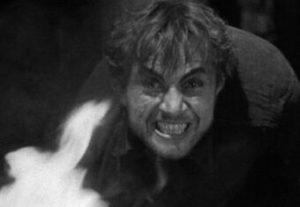 Part 7 – Fritz is himself a kind of monster, a hunchback like Quasimodo. Perhaps like Quasimodo, Fritz has been bullied and abused by people his whole life. Frankenstein certainly bullies Fritz. But unlike Quasimodo, Fritz is not basically kind and good. The abuse he endured has turned him cruel, even evil.
Part 7 – Fritz is himself a kind of monster, a hunchback like Quasimodo. Perhaps like Quasimodo, Fritz has been bullied and abused by people his whole life. Frankenstein certainly bullies Fritz. But unlike Quasimodo, Fritz is not basically kind and good. The abuse he endured has turned him cruel, even evil.
Fritz is like the Phantom, Erik, who said, “If I am a monster it is because men have made me that way”.
Fritz obviously enjoys torturing the monster, but he apparently got too close and the monster gets a hold of him and strangles him with his own whip. If the monster is only an animal we cannot not call this a murder, but if the monster is human we have to ask ourselves, “Is this a murder?” Is it? If the monster were arrested and taken to court to stand trial for murder would you say he was guilty or not guilty? The monster also kills Dr. Waldman. Would you say he was guilty or not guilty in that case? Write your thoughts down for both cases in your notes.
Part Eight
In a court of law, any good lawyer would offer the following defense for the killing of Fritz. Fritz had the monster chained up and was torturing him with a whip and with fire. To stop the torture the monster acted in self-defense. Similarly, Dr. Waldeman had promised that the monster would be “painlessly destroyed” but he drugs the monster into unconsciousness and then begins a “dissection”. But “dissections” are carried out on dead specimens, not living ones. What Waldman is really doing is performing a vivisection. Here is what Wikipedia has to say about vivisection:
Vivisection (from Latin: vivus — “alive,” and sectio — “cutting”) is defined as surgery conducted for experimental purposes on a living organism, typically animals with a central nervous system, to view living internal structure. Human vivisection has been perpetrated as a form of torture. (emphasis added).
Human vivisection is itself murder. The monster kills Waldeman as he makes his first surgical incision. Again, I would argue that killing Dr. Waldman was an act of self-defense. Every court in the world accepts self-defense as a legitimate legal defense against the charge of murder. If you kill someone who is trying to kill you or do you serious physical harm, it is not murder it is self-defense.
But let us recall that the monster kills a third person as well, little Maria.
Part Nine
The little girl Maria is left alone by her father who goes off to work. The monster comes out of the forest and Maria sees him. What does Maria see? At first, she is shocked to see a stranger, but children see differently from adults. When the adults look at the monster they are afraid of him because he is big and ugly, but Maria sees what he really is…at least what she believes he really is…another child. She is completely unafraid of him. She does what children do when they meet other children, she invites him to play. But the monster does not know how to play. He was never taught how to play. In fact, he was never taught anything except to sit down when told to do so. His whole life up until this moment has been about being knocked out, drugged, chained, tortured with fire and a whip, and cut with surgical knives. His creator once showed him the light, but that was quickly taken away from him. After that, his only experiences have been with darkness and pain.
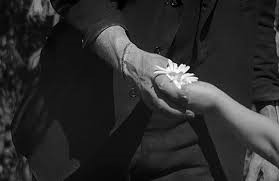 Maria gives him a present, a flower. He has never had a present before. He smiles.
Maria gives him a present, a flower. He has never had a present before. He smiles.
The game they are playing is very simple, a baby game because Maria knows he is mentally just a baby. The game is to throw the pretty flowers into the water and watch them float like boats! He is happy playing the game. The flowers are little and pretty and Maria is also little and pretty, too. So when the monster has no more pretty little flowers to float he throws the pretty little girl in the water to see her float. But little girls don’t float, they drown. He has killed his new friend. We see him struggle to get her back, but it is too late. He runs away in panic. Do you think this was a murder? Did he deliberately and knowingly harm little Maria?
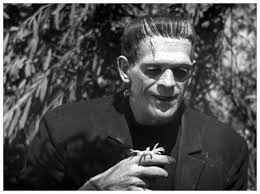 Courts all over the world also accept that sometimes someone causes the accidental death of another person. This is not a murder. None of the deaths the monster causes are murders. But the villagers don’t bother to consider the evidence or circumstances.
Courts all over the world also accept that sometimes someone causes the accidental death of another person. This is not a murder. None of the deaths the monster causes are murders. But the villagers don’t bother to consider the evidence or circumstances.
Part Ten – James Whale and his writers radically changed the story from the original. In the book, the monster kills a number of people in order to take revenge on Frankenstein for creating him and then rejecting him. In other words, the monster is evil in the book. But not in the movie. In the movie, he does become violent and dangerous, but that is because of how others have treated him. In fact, he only kills in self-defense or by accident. The mayor said that he would see that “justice” was done, but when he sees the monster he shouts, “There he is, the murderer”. The monster has yet to even be charged with a crime, yet rather than try to take the monster prisoner, the mob of villagers burn the mill with the monster inside. It is a horrible death, especially so since the monster’s greatest fear is fire. He must have died in great fear and agony…but that was what his whole brief life was in any case.
I am going to conclude this lecture by pointing out something about the final image in this scene. The villagers are burning the monster to death in the windmill. Please look at the image carefully and try to guess what Whale was doing with this image.
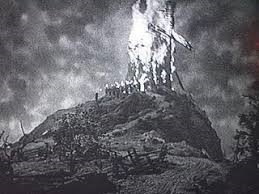 If you are having trouble with this just ignore the fire and focus on the shape of the windmill as I have frozen it.
If you are having trouble with this just ignore the fire and focus on the shape of the windmill as I have frozen it.
It is the sign of the cross. While Mary Shelley’s novel alludes to both the Book of Genesis in which God creates Adam and the Myth of Prometheus, James Whale adds a third allegory in the film. The cross suggests to us that the monster is a Christ figure. Jesus Christ was also executed on a hill by a mob of people who thought he was guilty of crimes when he was actually innocent. Just before he dies on the cross, Jesus cries out to God “Father, why have you forsaken me?”
The monster must also have asked why he was forsaken by his creator.